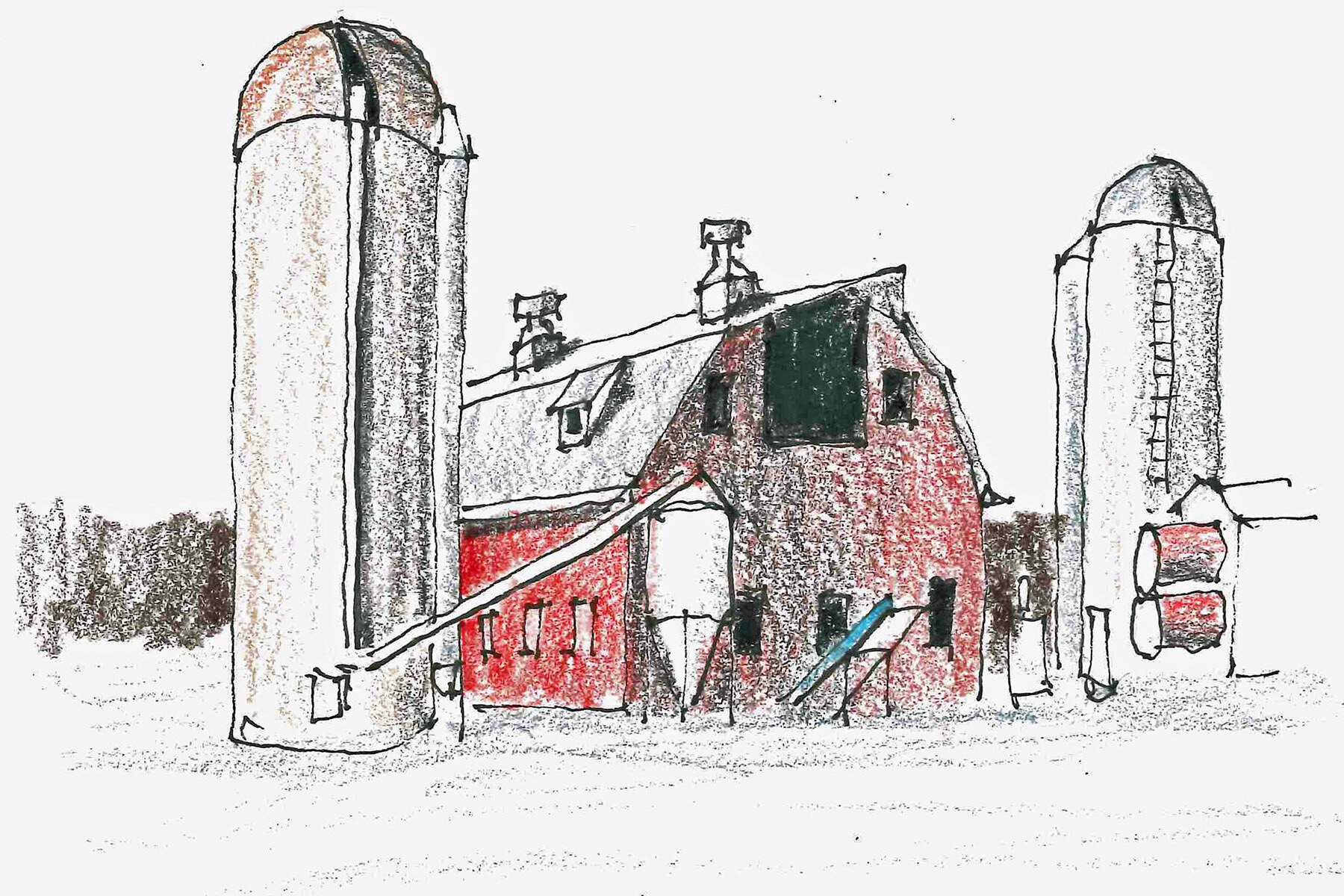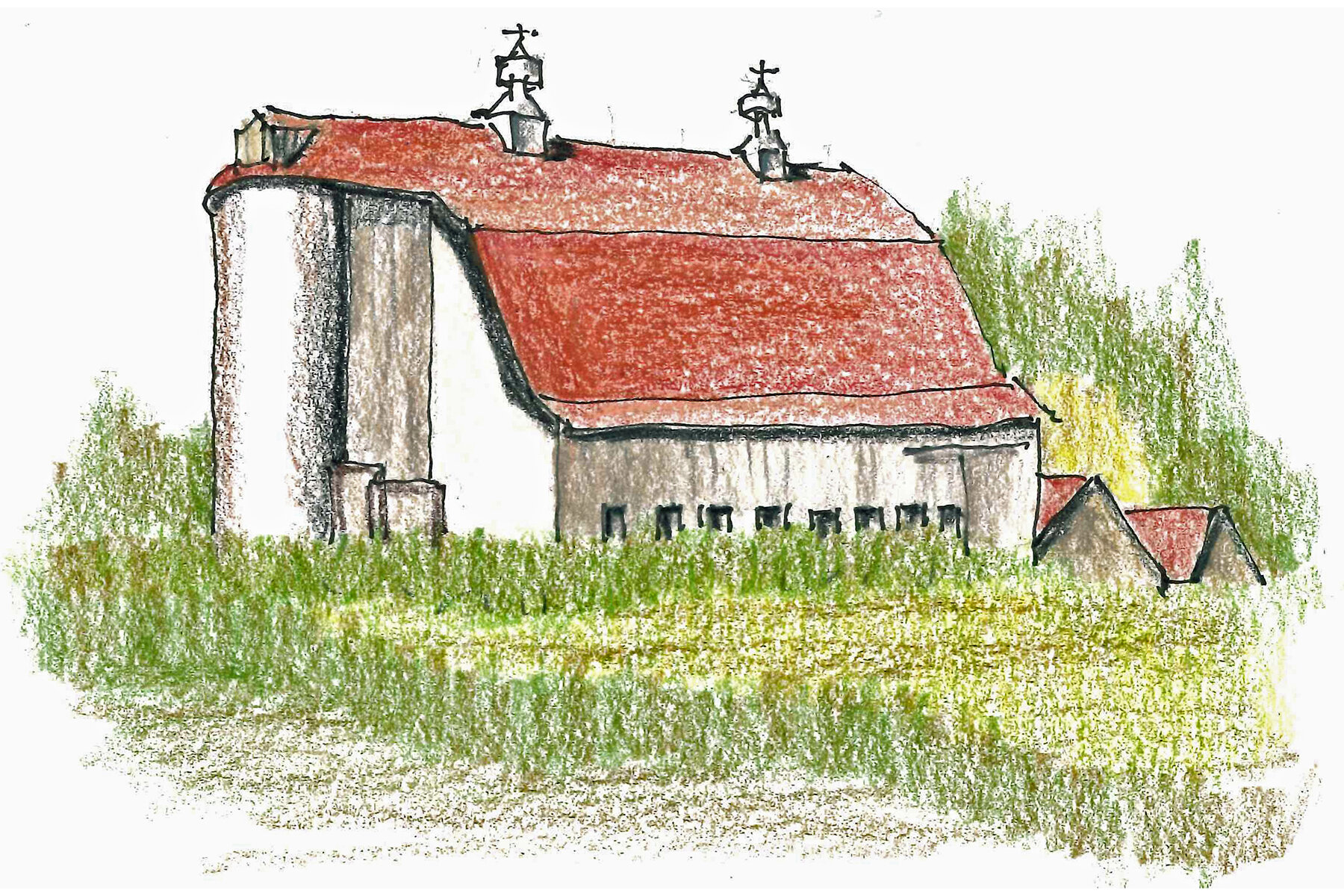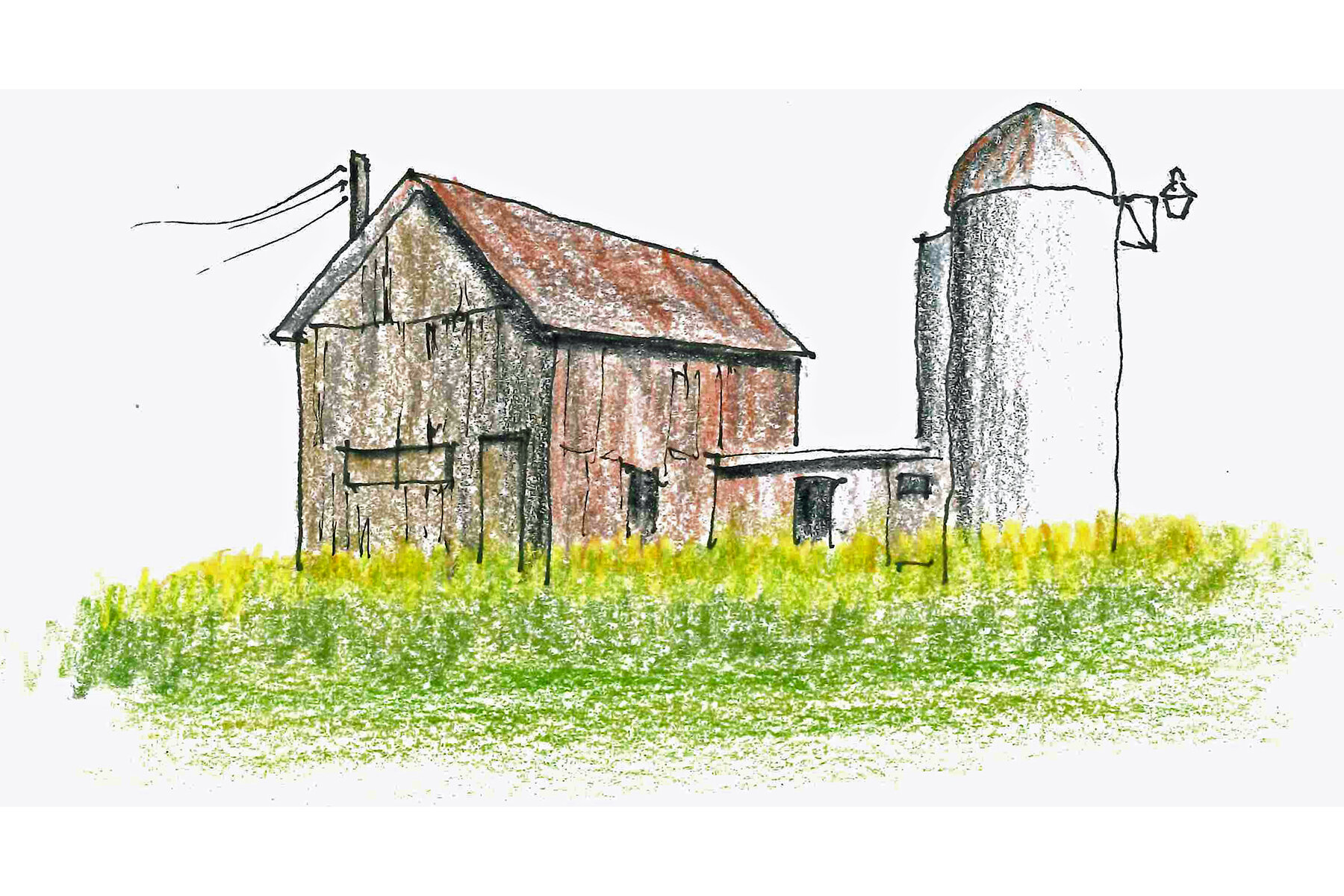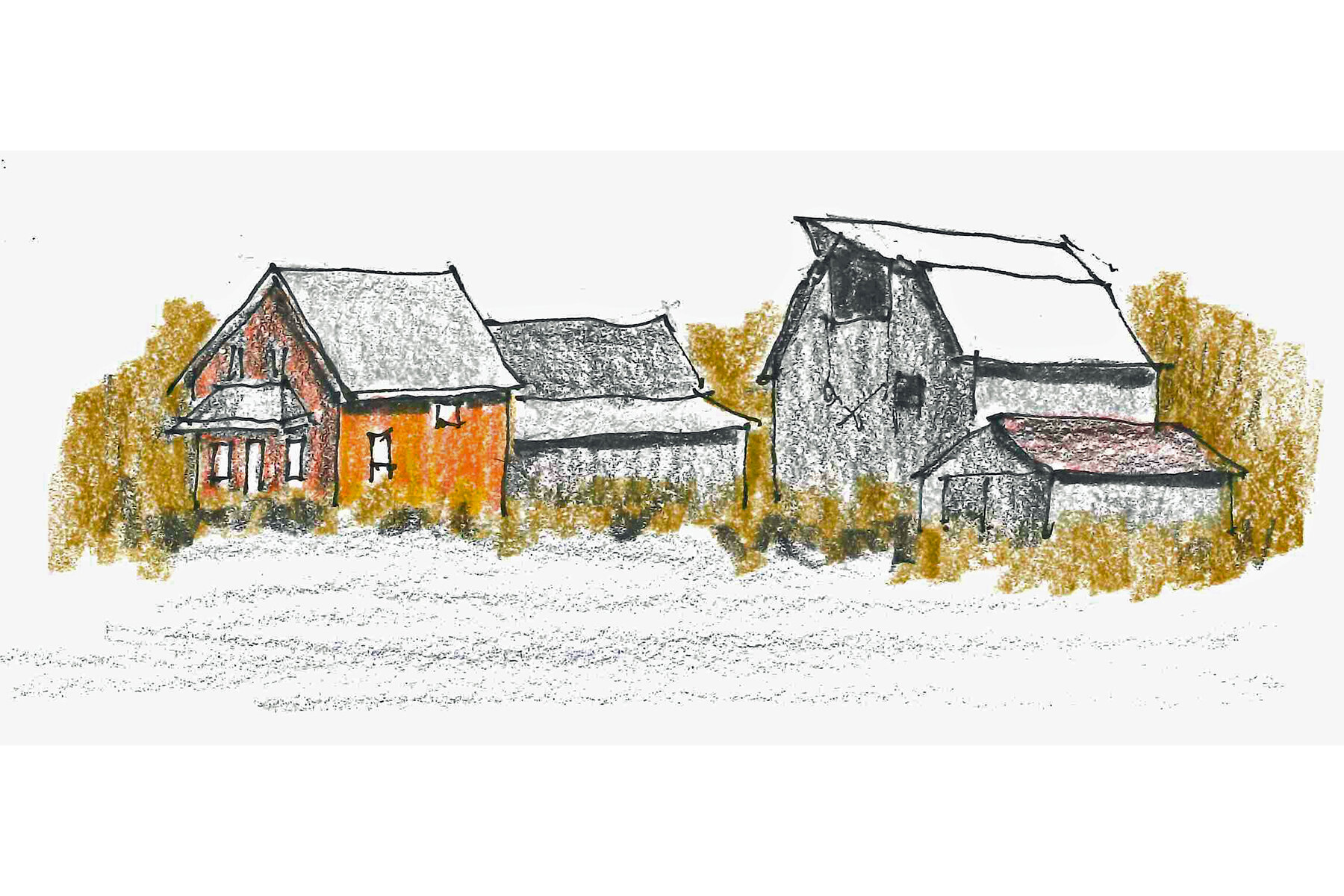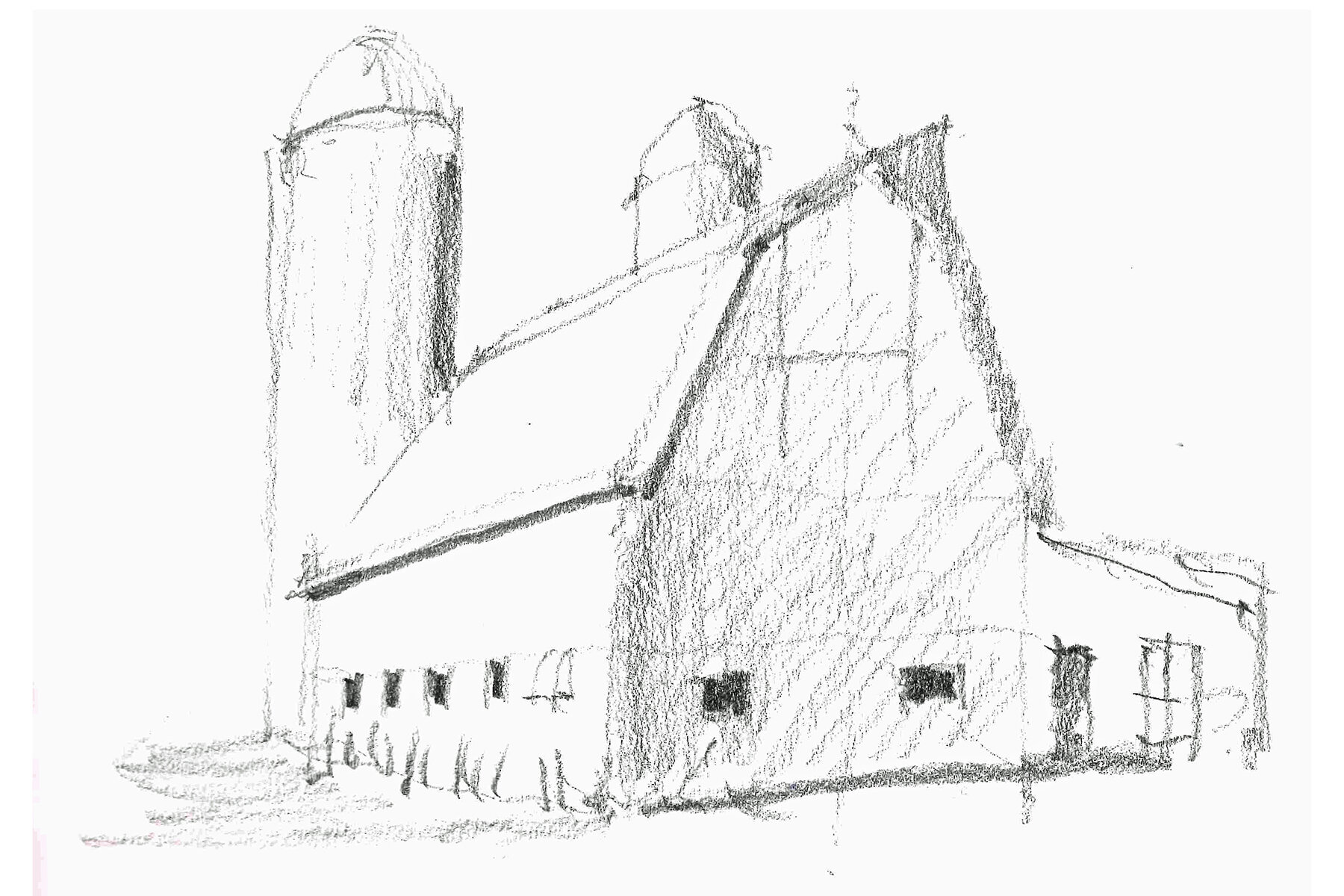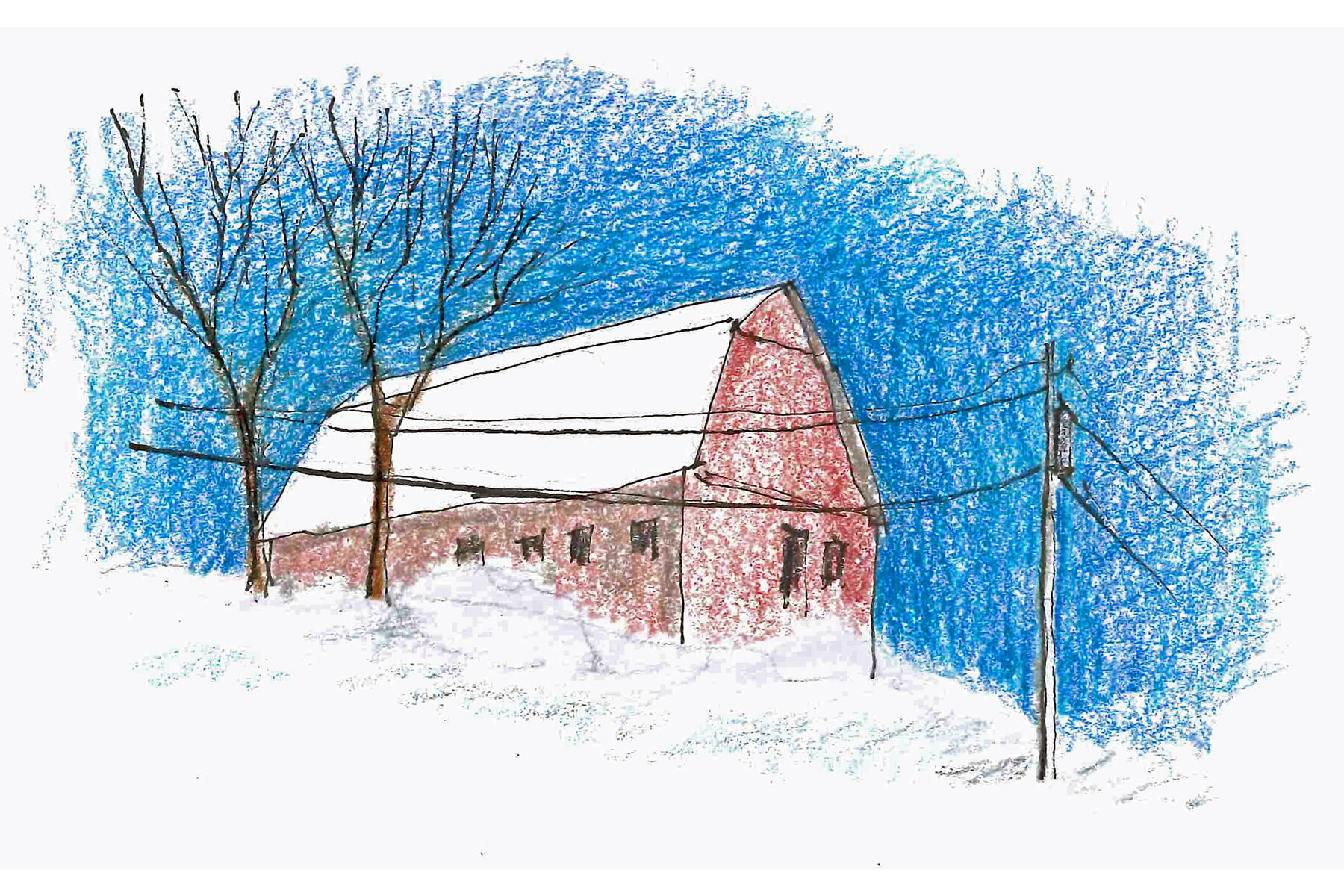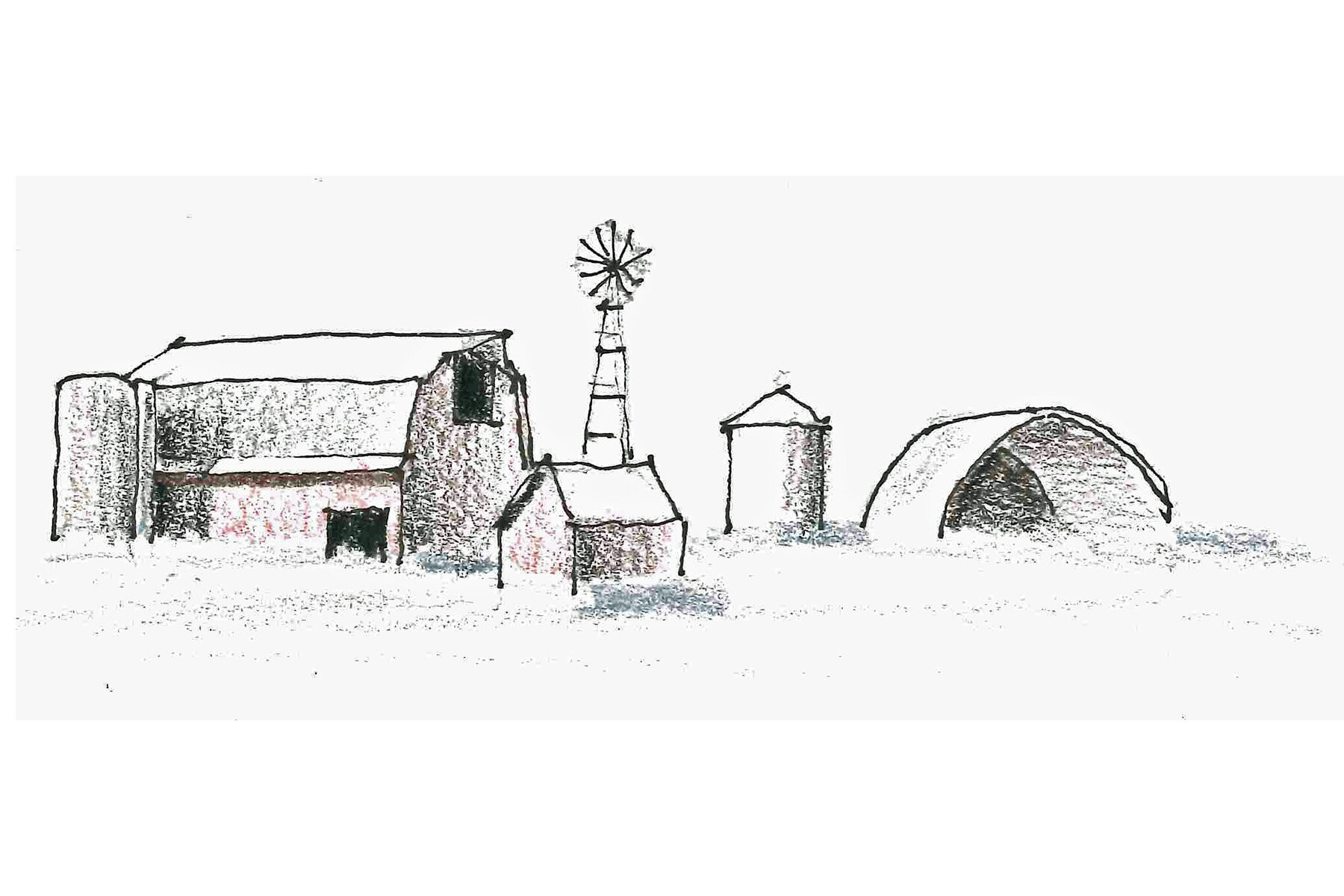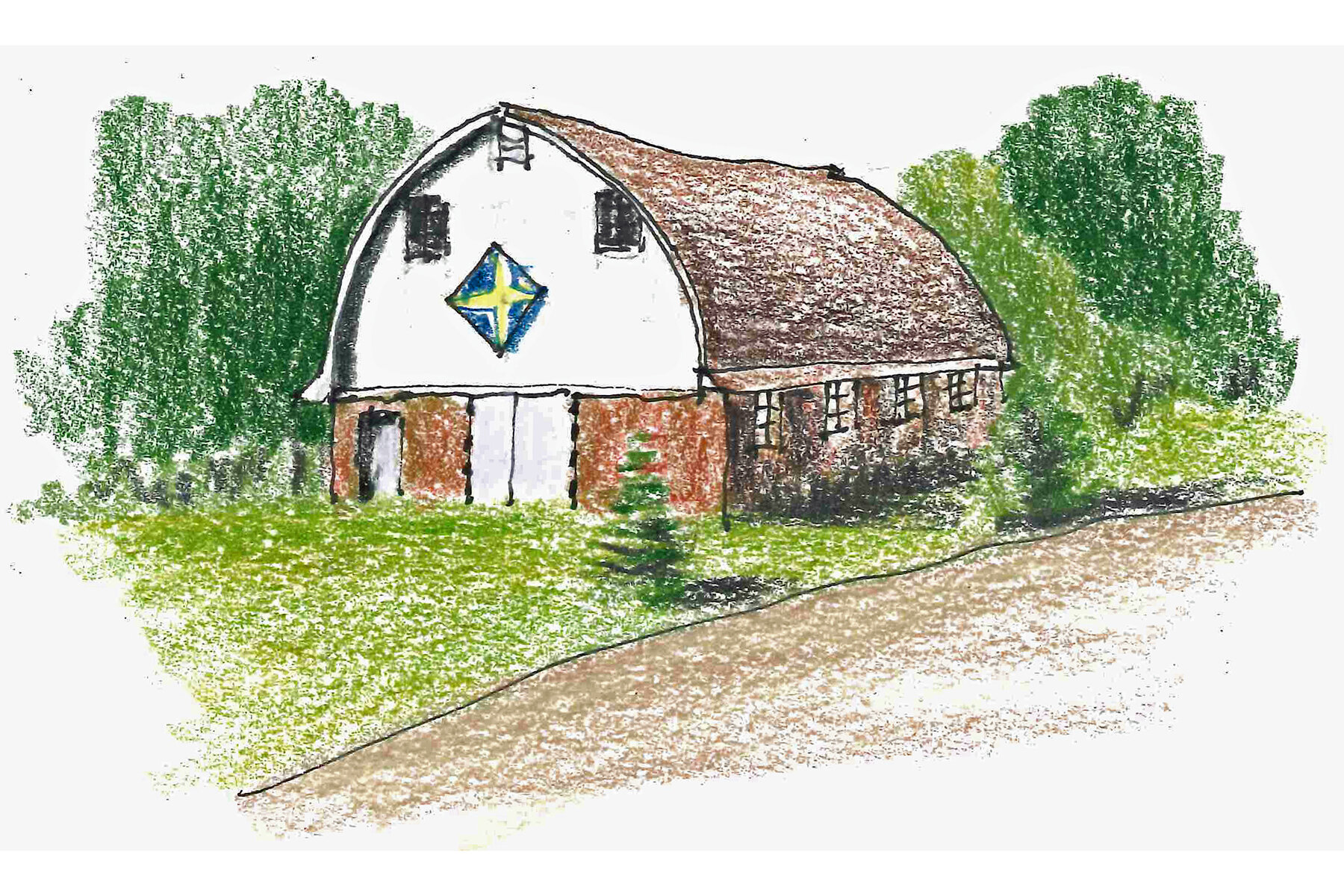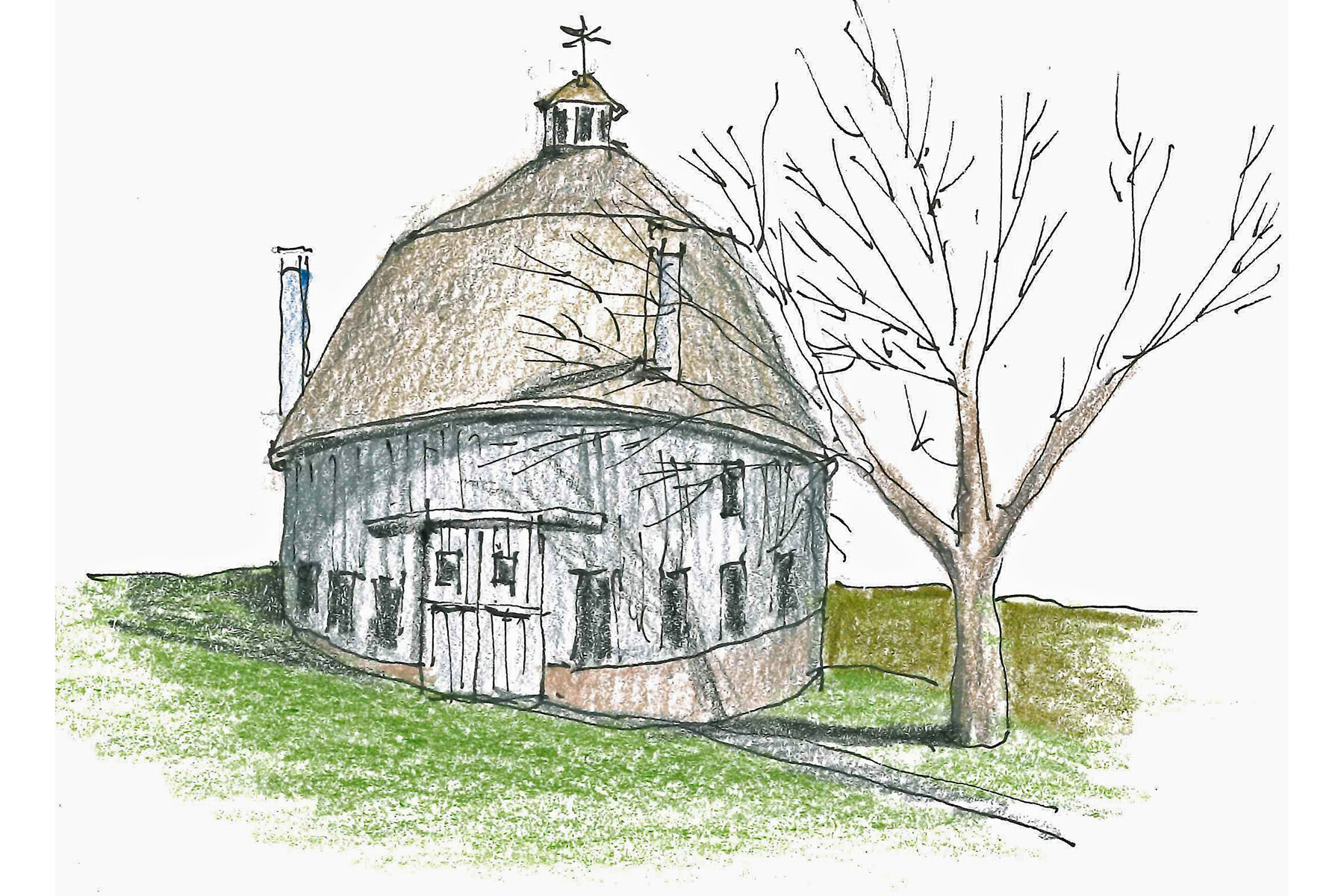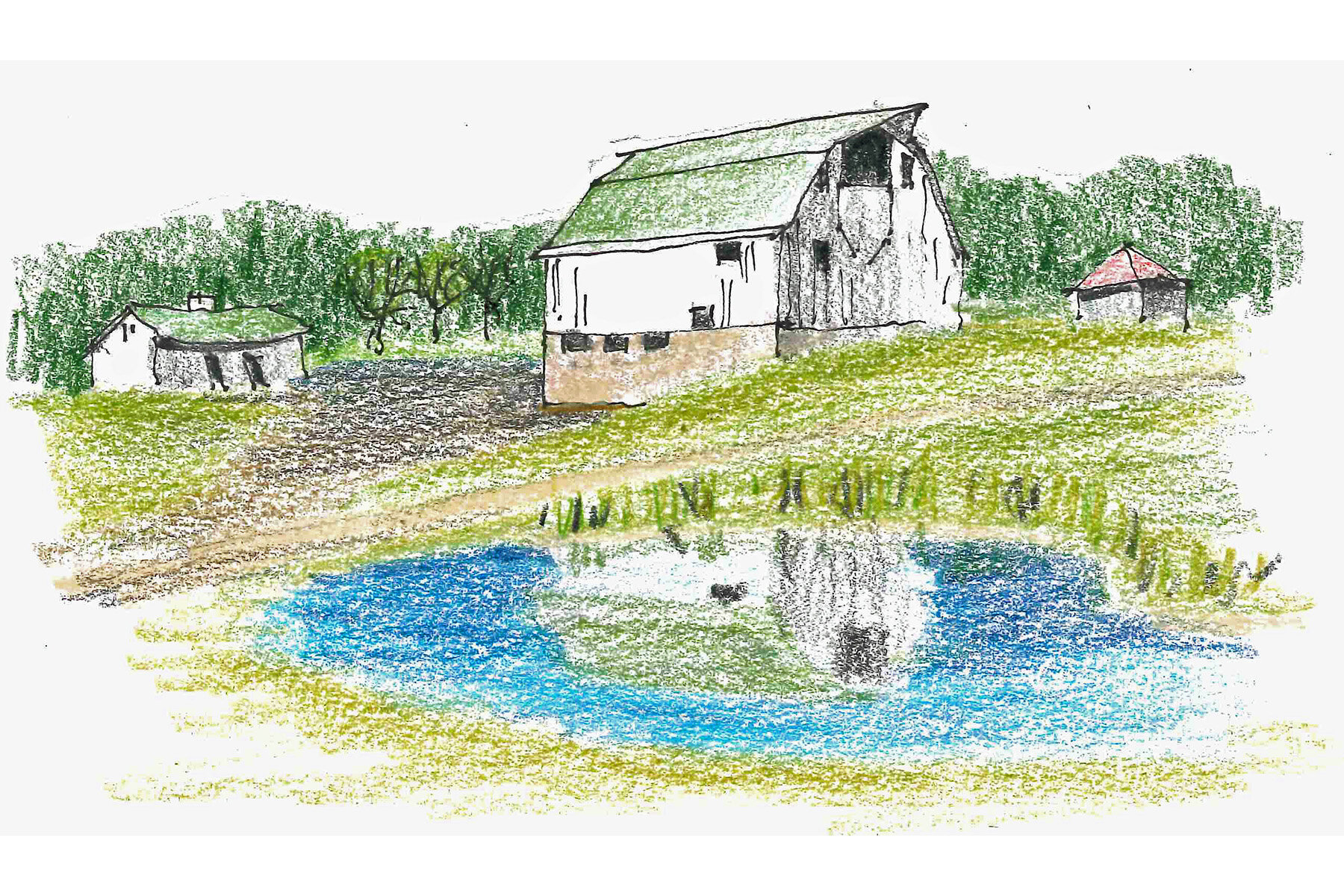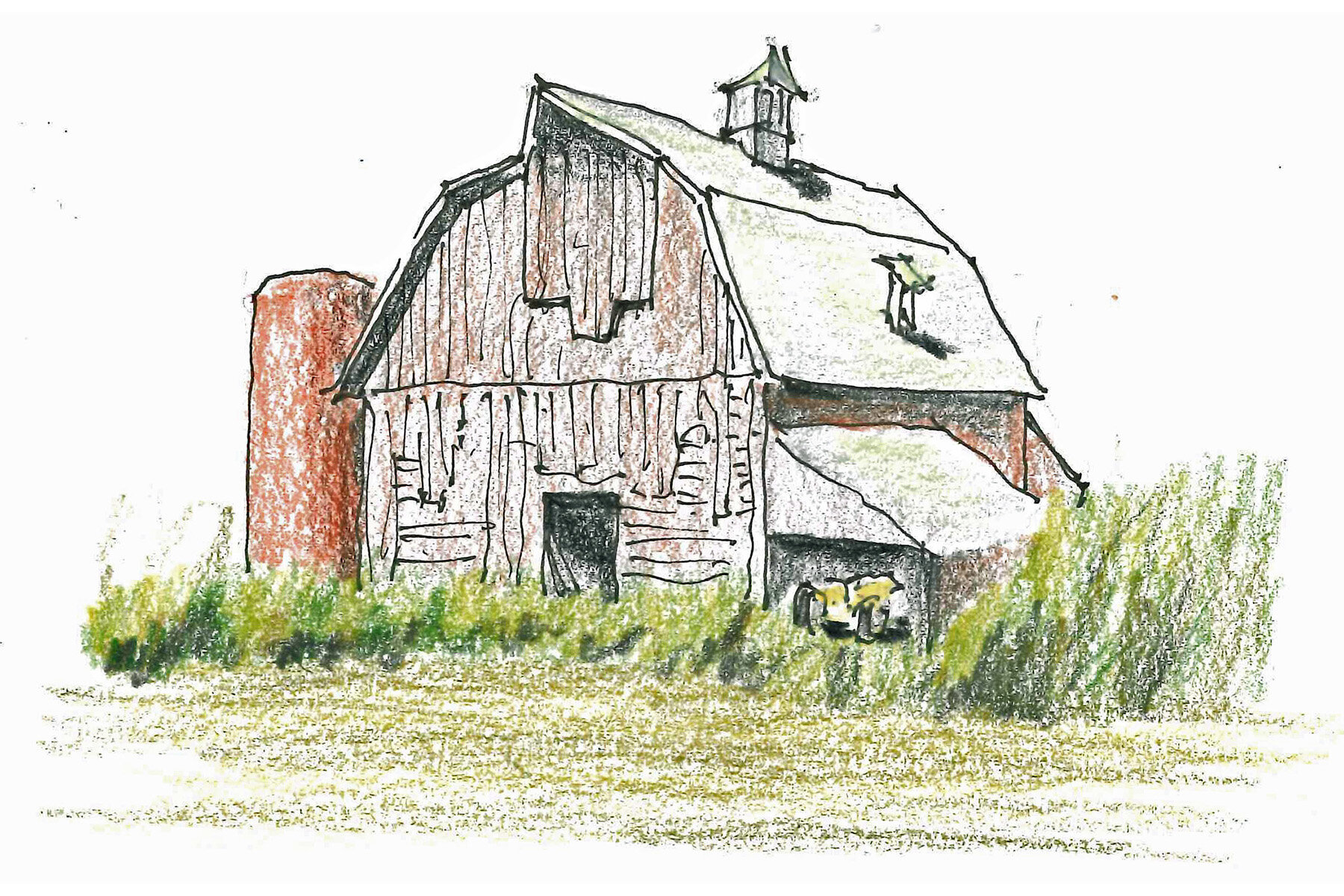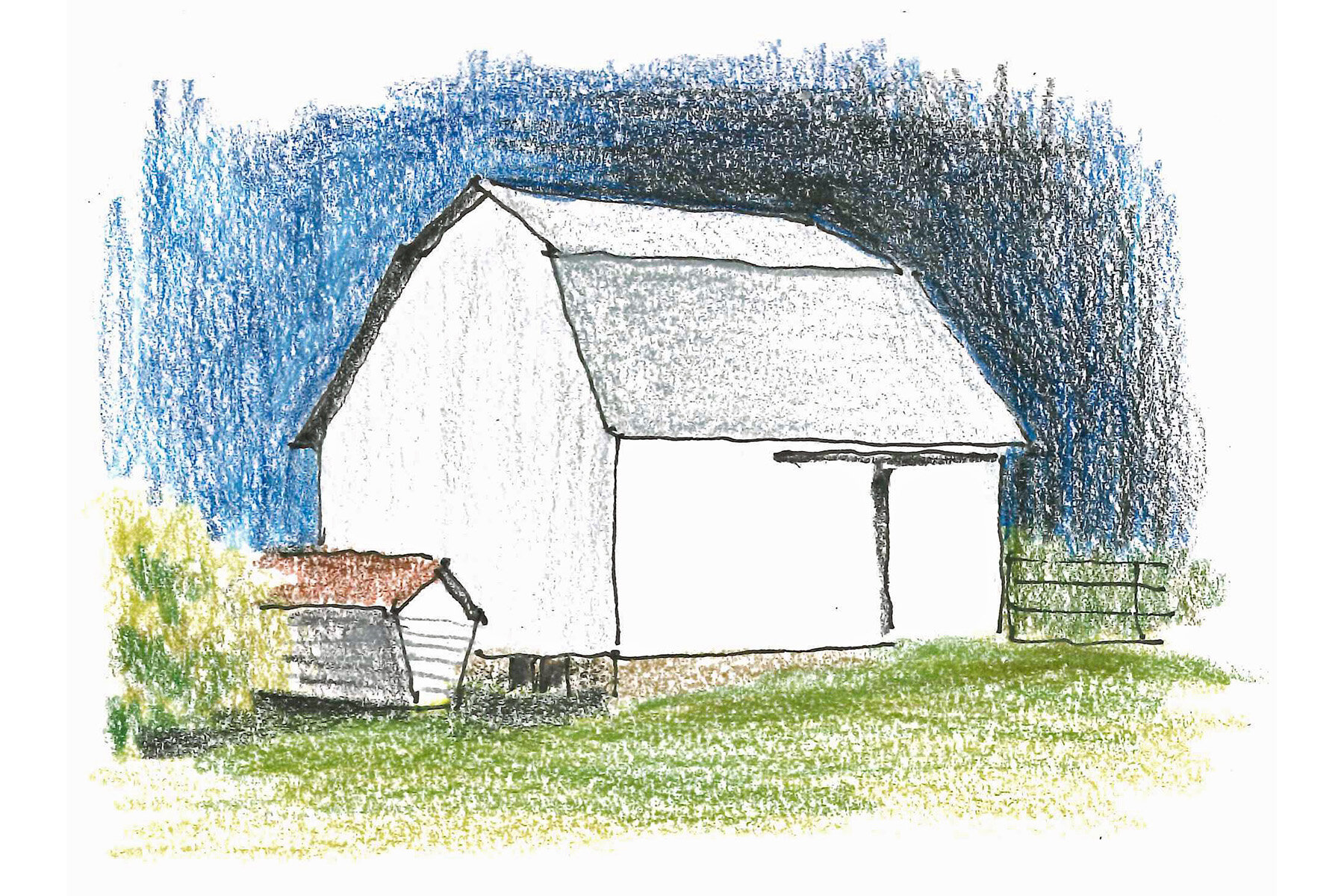Barns of the St. Croix River Valley
Artwork and text by Jim Lammers, FAIA | March 18, 2021
Artwork by Jim Lammers, FAIA.
POSTCARD
Over the past year, the pandemic has stood in the way of travel and travel sketching—my first loves. I elect to sketch some neighborhood barns and load a lawn chair into the car, plus a 5x7 sketch pad, Micron pens, Prismacolors, and a sandwich. There are barns aplenty in Chisago County where I live. Being a city boy, I’m enthralled. I’ve been driving past these barns for 25 years, but I didn’t see them until I started sketching them.
Barns stand as a testament to a bygone era. To the way farming used to be. To an age when land was the currency—the ticket to a livelihood.
“Each barn has its own story to tell,” says Lammers. “Sometimes, the farmer will come out to see what I’m doing—then I get the verbal story and often a tour.”
Today, a few old barns have been upgraded, or preserved and repurposed. Some provide wedding venues or support retail sales; others, like mine, have been maintained but used only for storage or an occasional barn dance. On working farms, old barns are put to use but not as originally intended, which was for storing hay in the haymow and cows or cattle and young stock below. Many barns return to earth, little by little, until one day the barn you’ve been driving by is now flat, marked only by a silo.
I resolve to write a book about the barns of the St. Croix River Valley. I begin reading about barns, then about St. Croix Valley history, then about farming and the changes it has undergone since the 19th century. Mesmerizing. I now have about 150 barn sketches.
Jim Lammers, FAIA, is the author of Capture the Moment: An Architect’s Guide to Travel Sketching. The Postcard department presents artworks that capture memorable architectural scenes from across Minnesota.

